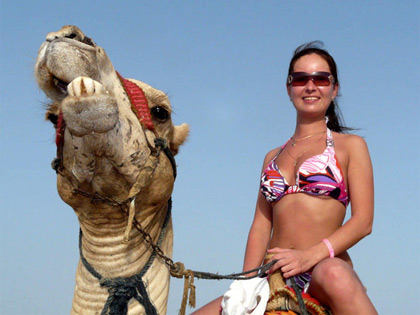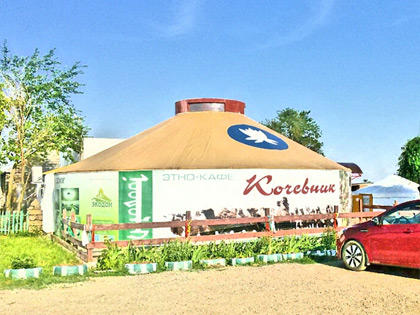Posts Tagged ‘Avalokiteshvara’
Dalai Lama
His Holiness the 14th Dalai Lama of Tibet
 The Dalai Lama is a high lama in the Gelug or “Yellow Hat” branch of Tibetan Buddhism. The name is a combination of the Sino-Mongolian word далай (dalai) meaning “Ocean” and the Tibetan word བླ་མ་ bla-ma (with a silent “b”) meaning “chief, high priest”.
The Dalai Lama is a high lama in the Gelug or “Yellow Hat” branch of Tibetan Buddhism. The name is a combination of the Sino-Mongolian word далай (dalai) meaning “Ocean” and the Tibetan word བླ་མ་ bla-ma (with a silent “b”) meaning “chief, high priest”.
Read the rest of this entry »
Professor from St. Petersburg about Buddhism, kalmyk art, ritual dances and temples
 Professor from St. Petersburg Svetlana Makhlina about Buddhism, kalmyk culture, ritual dances and temples
Professor from St. Petersburg Svetlana Makhlina about Buddhism, kalmyk culture, ritual dances and temples
Buddhism – historically the first world religion. And yet, as Borges said, is “the most widespread religion in the world”. In Russia, the earliest penetration of Buddhism was characteristic of the Kalmyk people, who took more than 400 years ago.
Kalmyk culture germinated on the unique cultural soil elyutov who lived in a colorful country where the vast steppes “stretched white, happiness, koshmovye tent noble Noyon and zaisangs, but black as a bitter fate, tents commoners – albatu, ketchinerov and shabinerov”. Read the rest of this entry »
His Holiness the Dalai Lama will visit the UK from 15 to 23 June 2012
 His Holiness the Dalai Lama XIV, the incarnation of bodhisattva Avalokiteshvara, will visit the UK (United Kingdom) from 15 to 23 June, 2012. The Nobel Peace Prize Laureate’s nine day visit will take in the cities of Manchester, London, Edinburgh, Dundee and Inverness.
His Holiness the Dalai Lama XIV, the incarnation of bodhisattva Avalokiteshvara, will visit the UK (United Kingdom) from 15 to 23 June, 2012. The Nobel Peace Prize Laureate’s nine day visit will take in the cities of Manchester, London, Edinburgh, Dundee and Inverness.
The key themes throughout the visit will be the promotion of His Holiness the Dalai Lama’s message of non-violence, compassion and universal responsibility. Read the rest of this entry »
About Dalai Lama XIV in Kalmykia
 Ten thousands of believers in Buddha, Dharma and Sangha came from all parts of Russia and Kalmykia to Elista in 1991 to receive the Teaching and Blessing of Dalai Lama XIV, the incarnation of bodhisattva Avalokiteshvara.
Ten thousands of believers in Buddha, Dharma and Sangha came from all parts of Russia and Kalmykia to Elista in 1991 to receive the Teaching and Blessing of Dalai Lama XIV, the incarnation of bodhisattva Avalokiteshvara.
Dalai Lama said “It is necessary to revive the traditional faith of the ancestors, to rebuild the temples, stupas of enlightenment and suburgans but above all it is important to build the temple in one’s soul”. Read the rest of this entry »













